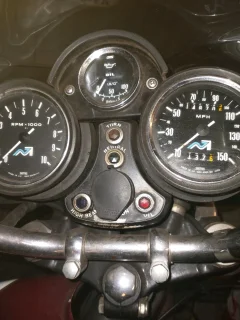Flatspot
VIP MEMBER
- Joined
- Jan 30, 2020
- Messages
- 1,280
I’ve stripped the switch down again and there’s problems with the contacts being so corroded, I’ve cleaned them as best I can but I need to go in there again.
I neglected to mention I did bridge the ballast with a wire to the -ve eliminating the switchgear, it worked.
So now with the switchgear almost working, it now starts and runs. But isn’t charging! 12.4v at 3000rpm only.
anyway, enjoy
I neglected to mention I did bridge the ballast with a wire to the -ve eliminating the switchgear, it worked.
So now with the switchgear almost working, it now starts and runs. But isn’t charging! 12.4v at 3000rpm only.
anyway, enjoy


